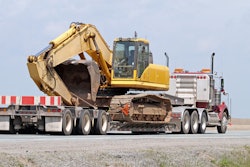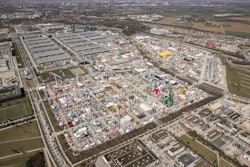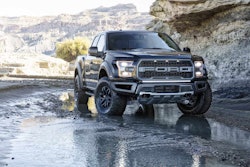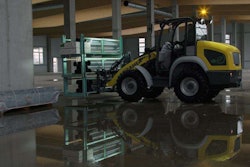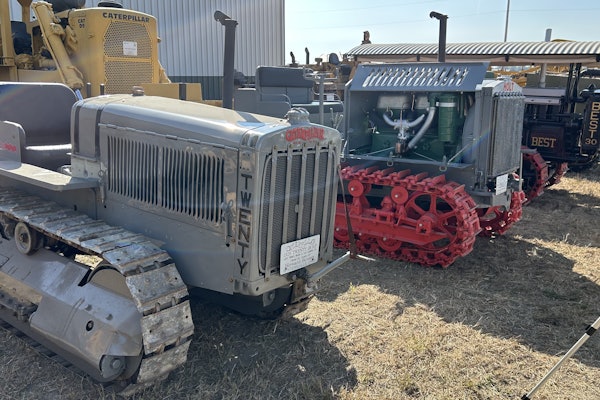
Forecasting businesses, nonprofits and government agencies to spend more than $1 trillion on equipment in 2016, the Equipment Leasing and Finance Association (ELFA) has released its Top 10 Equipment Acquisition Trends.
ELFA says more than $1.6 trillion will be spent on equipment—an all-time high for the sector—citing “solid market conditions and an improving U.S. economy” as being more than enough to compensate for “global headwinds and potential policy changes.”
According to the Top 10 list below, though equipment investment will reach an all-time high in 2016, spurred on by factors such as the end of zero interest rate policy growth, growth will be moderate due to uncertainties such as the 2016 presidential election, low oil prices and economic slowdowns.
ELFA has also put together a short video rundown of the trends:
1. U.S. investment in equipment and software will hit a new high, but moderate in growth as businesses hold back on spending.
Business investment will reach a new all-time high level, but after a sustained period of increasing as a share of GDP, the equipment investment cycle has likely peaked. Manufacturing weakness, global uncertainty and low oil prices that have discouraged businesses from spending will further moderate investment growth rates.
2. End of zero interest rate policy will spur other businesses, particularly small businesses, to invest before rates go higher.
After the first short-term interest rate increase in nearly 10 years, look for the Federal Reserve to act gradually to make additional rate increases throughout the year. As a result, businesses that may have been hesitant about spending—particularly small firms—may be more inclined to pull the trigger to take advantage of still-low rates before they increase.
3. The growth of equipment acquired through financing will increase solidly, but more slowly.
In 2016, a projected $1.627 trillion will be invested in plant, equipment and software in the United States. Approximately 64% or $1.049 trillion of that investment is expected to be financed through loans, leases and lines of credit. Despite large volume and a rising propensity to finance, the waning replacement cycle and businesses’ continued hesitancy to expand will slow the rate of growth.
4. Businesses will begin preparing for new lease accounting rules.
After many years of anticipating the new lease accounting standard and attendant uncertainty in the marketplace, companies will move forward and prepare to adopt it. Although the new standard will change how leases are accounted for on corporate balance sheets, it will not impact the ability of companies to acquire productive equipment to grow their businesses. The primary reasons to lease equipment will remain intact under the new rules, from maintaining cash flow, to preserving capital, to obtaining flexible financial solutions, to avoiding obsolescence.
5. China’s economic woes will be a global concern.
A sharp slowdown in China’s economy will be a threat to global growth this year. While the U.S. economy is somewhat insulated (only about 7% of U.S. exports are shipped to China), U.S. manufacturers will feel the impact of reduced demand in China as well as its trading partners (e.g., Russia and Japan) as their economies absorb the effects of China’s slowdown.
6. Equipment investment will vary widely by industry vertical.
Look for a handful of equipment verticals to account for weakness in business investment, and others to gain momentum. Among the underperforming equipment types are agriculture, mining and oilfield, railroad, industrial and materials handling equipment. Medical equipment, computers and software are strengthening and construction equipment should remain solid with an improving housing sector.
7. Customer demand for greater flexibility and convenience will increase the use of non-standard financing agreements.
Shifts in customer preferences for managed services (bundling equipment, services, supplies and software), pay-per-use leases and alternative financing will spur equipment finance companies to find innovative ways to fill the demand. These deals won’t replace standard leases, but will become a larger proportion of financings.
8. Low oil prices will continue to impede energy investment.
In 2016, global oil production will remain elevated due to factors including improved U.S. oil industry efficiency and increased supply from China, Argentina and Iran. The result is likely to be sustained low oil prices, which will continue to dampen energy equipment investment.
9. Eyes will be on 2016 presidential election for potential policy shifts.
The potential outcomes of the 2016 presidential election and their related policy implications will give businesses new factors to weigh when making their equipment acquisition plans.
10. Looming “wild cards” could influence business investment decisions.
Additional factors could present headwinds to equipment investment in 2016. A low inventory of homes in a housing market poised for a breakout year could either cause construction investment to surge or push up home prices and deter would-be buyers. The stronger U.S. labor market could accelerate wage growth, which would cause consumer confidence and spending to rise, but may also spur inflation, which could encourage the Fed to raise interest rates faster than expected. Last, a threat of continuing terrorist attacks could present economic and policy implications that in the short and longterm could divert capital spending resources.




